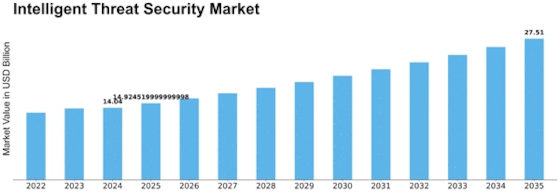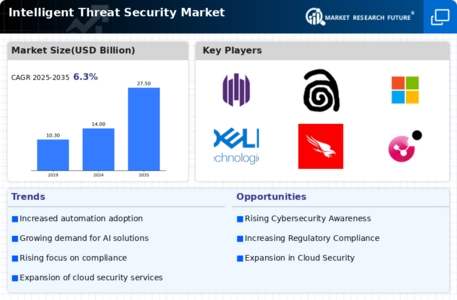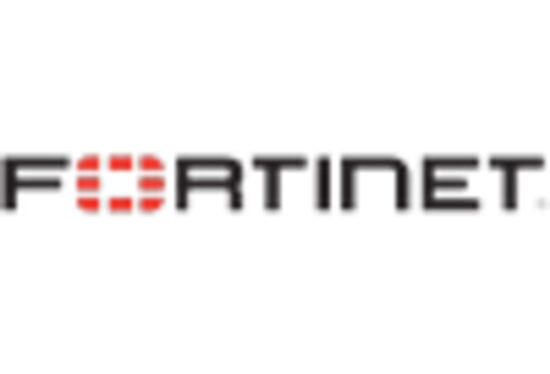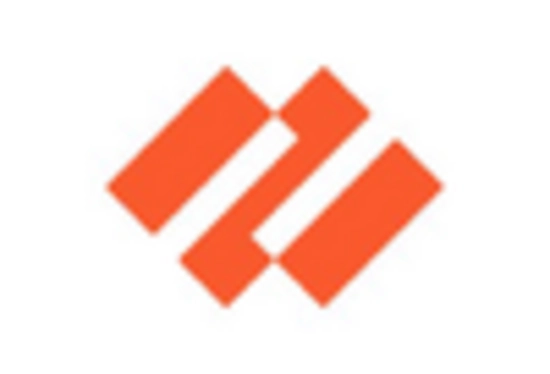-
Executive Summary
-
Scope of the Report
-
Market
-
Definition
-
Scope of the Study
- Research Objectives
- Assumptions & Limitations
-
2.3
-
Markets Structure
-
Market Research Methodology
-
Research Process
-
3.2
-
Secondary Research
-
Primary Research
-
Forecast Model
-
Market Landscape
-
4.1
-
Porter’s Five Forces Analysis
-
4.1.2
-
Bargaining power of buyers
-
Power of Suppliers
-
Market
-
Threat of New Entrants
-
Threat of substitutes
-
Rivalry
-
Bargaining
-
Value Chain/Supply Chain of Intelligent Threat Security
-
Market Overview of Intelligent Threat Security Market
-
Introduction
-
5.2
-
Growth Drivers
-
Impact Analysis
-
Market Challenges
-
Market Trends
-
6.1
-
Introduction
-
Growth Trends
-
Impact analysis
-
Intelligent
-
Threat Security Market by Solution
-
Introduction
-
Security Information and Event
- Market Estimates & Forecast, 2023-2032
- Market
-
Management (SIEM)
-
Estimates & Forecast by Region, 2023-2032
-
log management
- Market
- Market Estimates & Forecast
-
Estimates & Forecast, 2023-2032
-
by Region, 2023-2032
-
Identity and Access Management (IAM)
- Market Estimates & Forecast,
- Market Estimates & Forecast by Region, 2023-2032
-
Security
- Market Estimates & Forecast,
- Market Estimates & Forecast by Region, 2023-2032
-
and Vulnerability Management (SVM)
-
Risk Management
- Market Estimates & Forecast
-
7.6.1
-
Market Estimates & Forecast, 2023-2032
-
by Region, 2023-2032
-
Incident forensics
- Market Estimates & Forecast,
- Market Estimates & Forecast by Region, 2023-2032
-
Intelligent
-
Threat Security Market by Service
-
Introduction
-
Managed Service
- Market Estimates & Forecast
-
8.2.1
-
Market Estimates & Forecast, 2023-2032
-
by Region, 2023-2032
-
Advanced Threat Monitoring
- Market Estimates & Forecast,
- Market Estimates & Forecast by Region, 2023-2032
-
Security
- Market Estimates & Forecast, 2023-2032
- Market
-
Intelligence Feed
-
Estimates & Forecast by Region, 2023-2032
-
Professional Service
- Market Estimates & Forecast
-
8.5.1
-
Market Estimates & Forecast, 2023-2032
-
by Region, 2023-2032
-
Consulting Service
- Market Estimates & Forecast,
- Market Estimates & Forecast by Region, 2023-2032
-
Training
- Market Estimates & Forecast, 2023-2032
- Market
-
and Support
-
Estimates & Forecast by Region, 2023-2032
-
Intelligent Threat Security
-
Market by Deployment mode
-
Introduction
-
Cloud
- Market Estimates & Forecast,
- Market Estimates & Forecast by Region, 2023-2032
-
On Premises
- Market Estimates & Forecast
-
9.3.1
-
Market Estimates & Forecast, 2023-2032
-
by Region, 2023-2032
-
Intelligent Threat Security Market by Organization Size
-
10.1
-
Introduction
-
SME’s
- Market Estimates & Forecast,
- Market Estimates & Forecast by Region, 2023-2032
-
Large
- Market Estimates & Forecast, 2023-2032
-
Enterprises
-
10.3.2
-
Market Estimates & Forecast by Region, 2023-2032
-
Intelligent Threat Security
-
Market by Verticals
-
Introduction
-
BFSI
- Market Estimates &
- Market Estimates & Forecast by Region, 2023-2032
- Market Estimates & Forecast, 2023-2032
- Market Estimates &
-
Forecast, 2023-2032
-
11.3
-
Government
-
Forecast by Region, 2023-2032
-
IT & Telecom
- Market Estimates &
- Market Estimates & Forecast by Region, 2023-2032
- Market Estimates & Forecast, 2023-2032
- Market Estimates &
-
Forecast, 2023-2032
-
11.5
-
Healthcare
-
Forecast by Region, 2023-2032
-
Retail
- Market Estimates &
- Market Estimates & Forecast by Region, 2023-2032
- Market Estimates & Forecast, 2023-2032
-
Forecast, 2023-2032
-
11.7
-
Transportation
-
11.7.2
-
Market Estimates & Forecast by Region, 2023-2032
-
Energy & Utilities
- Market Estimates &
-
11.8.1
-
Market Estimates & Forecast, 2023-2032
-
Forecast by Region, 2023-2032
-
Manufacturing
- Market Estimates &
- Market Estimates & Forecast by Region, 2023-2032
- Market Estimates & Forecast, 2023-2032
- Market Estimates &
-
Forecast, 2023-2032
-
11.10
-
Education
-
Forecast by Region, 2023-2032
-
Others
- Market Estimates &
- Market Estimates & Forecast by Region, 2023-2032
-
Forecast, 2023-2032
-
12.
-
Intelligent Threat Security Market by Region
-
Introduction
-
North
- Market Estimates & Forecast, 2023-2032
- Market Estimates &
- Market Estimates & Forecast by Service,
- Market Estimates & Forecast by Deployment mode, 2023-2032
- Market Estimates & Forecast, 2023-2032
- Market Estimates &
- Market Estimates & Forecast by Service,
- Market Estimates & Forecast by Deployment mode, 2023-2032
- Market Estimates & Forecast, 2023-2032
- Market Estimates &
- Market Estimates & Forecast by Deployment
- China
- India
- Japan
- Rest of Asia Pacific
-
America
-
Forecast by Solution, 2023-2032
-
12.2.5
-
U.S.
-
Forecast by Solution, 2023-2032
-
12.2.6
-
Mexico
-
Forecast by Solution, 2023-2032
-
12.2.7
-
Canada
-
Forecast by Solution, 2023-2032
-
12.3
-
Europe
-
Forecast by Solution, 2023-2032
-
12.3.5
-
Germany
-
Forecast by Solution, 2023-2032
-
12.3.6
-
France
-
Forecast by Solution, 2023-2032
-
12.3.7
-
U.K
-
Forecast by Solution, 2023-2032
-
12.4
-
Asia Pacific
-
12.4.2
-
Market Estimates & Forecast by Solution, 2023-2032
-
Forecast by Service, 2023-2032
-
mode, 2023-2032
-
12.4.5.2
-
Market Estimates & Forecast by Solution, 2023-2032
-
Forecast by Service, 2023-2032
-
mode, 2023-2032
-
12.4.6.5
-
Market Estimates & Forecast by Solution, 2023-2032
-
Forecast by Service, 2023-2032
-
mode, 2023-2032
-
12.4.7.2
-
Market Estimates & Forecast by Solution, 2023-2032
-
Forecast by Service, 2023-2032
-
mode, 2023-2032
-
Forecast, 2023-2032
-
12.4.8.3
-
Market Estimates & Forecast by Service, 2023-2032
-
Forecast by Deployment mode, 2023-2032
-
Rest of the World
- Market
- Market Estimates & Forecast
- Market Estimates & Forecast by Service, 2023-2032
- The
- Latin Countries
-
Estimates & Forecast, 2023-2032
-
by Solution, 2023-2032
-
12.5.4
-
Market Estimates & Forecast by Deployment mode, 2023-2032
-
Middle East & Africa
-
12.5.6.2
-
Market Estimates & Forecast by Solution, 2023-2032
-
Forecast by Service, 2023-2032
-
mode, 2023-2032
-
Forecast, 2023-2032
-
12.5.7.3
-
Market Estimates & Forecast by Service, 2023-2032
-
Forecast by Deployment mode, 2023-2032
-
Company Profiles
-
IBM Corporation
- Product/Business Segment Overview
- Financial Updates
-
13.1.1
-
Company Overview
-
13.1.4
-
Key Developments
-
Dell Technologies Inc.
- Company Overview
- Financial Updates
- Key Developments
- Company Overview
- Product/Business Segment Overview
- Key Developments
-
13.2.2
-
Product/Business Segment Overview
-
13.3
-
McAfee LLC
-
13.3.3
-
Financial Updates
-
Trend Micro Incorporated
- Company Overview
- Product/Business Segment Overview
- Key Developments
-
(Japan)
-
13.4.3
-
Financial Updates
-
Symantec Corporation
- Product/Business Segment Overview
- Financial Updates
-
13.5.1
-
Company Overview
-
13.5.4
-
Key Developments
-
Check Point Software Technologies Ltd.
- Company
- Product/Business Segment Overview
- Financial Updates
-
Overview
-
13.6.4
-
Key Developments
-
Juniper Networks Inc
- Company Overview
- Financial Updates
- Key Developments
- Company Overview
- Product/Business Segment
- Financial Updates
- Key Developments
-
13.7.2
-
Product/Business Segment Overview
-
13.8
-
FireEye Inc.
-
Overview
-
LogRhythm Inc.
- Product/Business Segment Overview
- Financial Updates
-
13.9.1
-
Company Overview
-
13.9.4
-
Key Developments
-
Looking Glass Cyber Solutions Inc.
- Company Overview
- Financial Updates
- Key Developments
-
13.10.2
-
Product/Business Segment Overview
-
14
-
Conclusion
-
-
LIST OF TABLES
-
Table1 World Population by Major Regions
-
(2023-2032)
-
Table2 Global Intelligent Threat Security Market: by Country,
-
Table3 North America: Intelligent Threat Security Market, by Country, 2023-2032
-
Table4 Europe: Intelligent Threat Security Market, by Country, 2023-2032
-
Table5 Asia Pacific: Intelligent Threat Security Market, by Country, 2023-2032
-
Table6 The Middle East & Africa: Intelligent Threat Security Market,
-
by Country, 2023-2032
-
Table7 Latin America: Intelligent Threat Security Market, by
-
Country, 2023-2032
-
Table8 North America: Intelligent Threat Security Market, by
-
Country
-
Table9 North America: Intelligent Threat Security Market, by Solution
-
Table10
-
North America: Intelligent Threat Security Market, by Service
-
Table11 North
-
America: Intelligent Threat Security Market, by Deployment mode
-
Table12 Europe:
-
Intelligent Threat Security Market, by Country
-
Table13 Europe: Intelligent Threat
-
Security Market, by Solution
-
Table14 Europe: Intelligent Threat Security Market,
-
by Service
-
Table15 Europe: Intelligent Threat Security Market, by Deployment mode
-
Table16
-
Asia Pacific: Intelligent Threat Security Market, by Country
-
Table17 Asia
-
Pacific: Intelligent Threat Security Market, by Solution
-
Table18 Asia Pacific: Intelligent
-
Threat Security Market, by Service
-
Table19 Asia Pacific: Intelligent Threat
-
Security Market, by Deployment mode
-
Table20 The Middle East & Africa:
-
Intelligent Threat Security Market, by Country
-
Table21 The Middle East &
-
Africa: Intelligent Threat Security Market, by Solution
-
Table22 The Middle East &
-
Africa: Intelligent Threat Security Market, by Service
-
Table23 The Middle East &
-
Africa: Intelligent Threat Security Market, by Deployment mode
-
Table24 Latin
-
America: Intelligent Threat Security Market, by Country
-
Table25 Latin America: Intelligent
-
Threat Security Market, by Solution
-
Table26 Latin America: Intelligent Threat
-
Security Market, by Service
-
Table27 Latin America: Intelligent Threat Security
-
Market, by Deployment mode
-
LIST OF FIGURES
-
Global Intelligent Threat
-
Security Market segmentation
-
Forecast Methodology
-
Porter’s
-
Five Forces Analysis of Global Intelligent Threat Security Market
-
Value
-
Chain of Global Intelligent Threat Security Market
-
Share of Intelligent
-
Threat Security Market in 2020, by Country (in %)
-
Global Intelligent Threat
-
Security Market, 2023-2032,
-
Sub-segments of Solution
-
Global
-
Intelligent Threat Security Market Size, by Solution, 2020
-
Share of Global Intelligent
-
Threat Security Market, by Solution, 2023-2032
-
Global Intelligent Threat
-
Security Market Size, by Service, 2020
-
Share of Global Intelligent
-
Threat Security Market, by Service, 2023-2032
-
Global Intelligent Threat
-
Security Market Size, by Deployment mode, 2020
-
Share of Global Intelligent
-
Threat Security Market, by Deployment mode, 2023-2032
-
Global Intelligent Threat
-
Security Market Size, by End-users, 2020
-
Share of Global Intelligent
-
Threat Security Market, by End-users, 2023-2032
-
Global Intelligent Threat
-
Security Market Size, by Components, 2020
-
Share of Global Intelligent
-
Threat Security Market, by Components, 2023-2032
-
Global Intelligent Threat
-
Security Market Size, by Professional Services, 2020
-
Share of Global Intelligent
-
Threat Security Market by Professional Services, 2023-2032










Leave a Comment